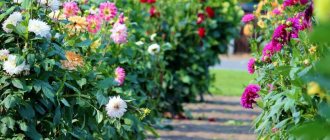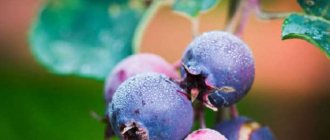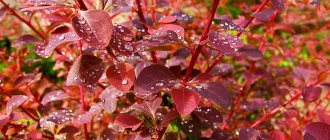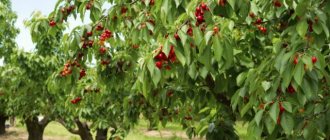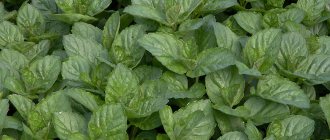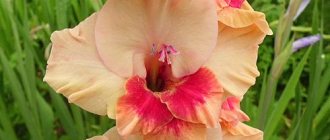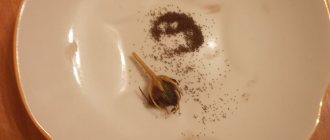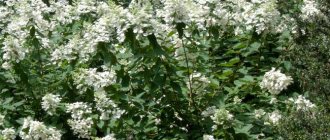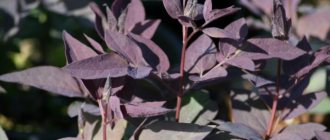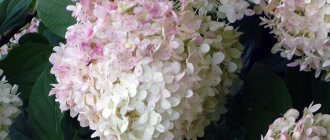Sweet cherry is a fruit tree belonging to the Plum genus and the Rosaceae family, considered the closest relative of the cherry.
This heat-loving plant is also known as “bird cherry”.
It reaches a height of 10 to 25 meters, has a lush crown of dark green leaves, blooms profusely and bears fruit with sweet and juicy berries.
This is one of the most ancient varieties of cherries known to the world.
The plant is very popular due to its unpretentious cultivation, fertility and high organoleptic qualities of the fruit.
See what a mature garden cherry tree looks like in the images below:
What does a cherry look like?
Cherry is a deciduous fruit tree. Its active fruiting usually begins at 4–6 years and lasts about 20 years.
cherry tree
An adult cherry tree is a tall, spreading tree with an ovoid or cone-shaped crown. In comfortable conditions it can grow up to 15 m, but usually the height is 4–5 m. It is distinguished by the rapid growth of shoots, especially at a young age. The color of the bark is brown or reddish, sometimes silver, with clearly visible stripes. The shoots are covered with small scales.
What kind of leaves does a cherry tree have?
The leaves are light green, ovate, obovate or elliptical in shape, shortly pointed with a serrate edge. Petioles up to 16 cm long. The leaf blade is wrinkled.
How cherry blossoms
This crop blooms earlier than other stone fruits. In Central Russia, the flowering period occurs at the end of April - beginning of May. The flowers are white, five-petaled, bisexual, with numerous stamens and one pistil. The plant is self-sterile and requires pollinating neighbors to bear fruit.
It is pollinated by bees and is a valuable honey plant.
Cherry ripening time
The timing of fruit ripening strongly depends on the region of growth. The difference in flowering and fruiting of the same variety in different climatic conditions can be up to 1 month. The early ones in the south produce a harvest already at the beginning of May, but usually the fruiting of cherries begins at the end of May and ends in August for the latest ones.
When do cherries produce their first harvest?
Most cherry varieties are early-bearing and can produce the first berries already 4 years after planting. Some begin to bear fruit later, at 5–6 years. The rate of early fruiting strongly depends on the growing conditions; if the place is chosen incorrectly, the plant may not begin to bear fruit.
Features of cherries
The cherry differs from its closest relative, the cherry, by the presence of one powerful trunk, lighter leaves and large size. There are some nuances in growing this crop. Its root system is powerful and well developed. There is only one tap root, but there are quite a few horizontal ones. The depth of their occurrence does not exceed 0.2–0.5 m. The proximity of the roots to the surface makes any agricultural work in the root zone impossible, otherwise there is a very high chance of destroying the tree.
This culture is more demanding in terms of where it grows; it does not tolerate proximity to groundwater. To bear fruit, it definitely needs a large amount of sunlight and the absence of cold wind. It will not do well in swampy lowlands, on clay soils or in close proximity to other trees.
The advantage of growing cherries is that they begin to bear fruit earlier than all other stone fruit crops. However, it must be borne in mind that the crop can be completely destroyed by birds, which love these berries more than any other fruit. Therefore, it is imperative to take measures to protect against birds.
Where do cherries grow?
The traditional regions for growing this crop are the south of Russia: Krasnodar region, North Caucasus, Crimea. However, thanks to breeding work, the cultivation boundaries were significantly expanded. Now some varieties grow well even in the Moscow region, and with proper care, these fruit trees can be grown even in the Urals and Siberia.
For planting, you need to choose a sunny, well-lit place with a groundwater level no higher than 2 m. The planting site should be protected from drafts and north winds. The distance from neighboring trees or buildings should not be less than 3 m.
Since cherries do not pollinate on their own, seedlings are usually planted in groups for cross-pollination. 3 m is also left between neighboring seedlings so that the trees do not compete with each other. An important condition is that there should be no other crops between neighboring trees. For example, if you plant an apple tree between two cherries, the yield will drop by half.
Cherry grows well on light loamy soils. Heavy clay soils are not suitable for growing this crop. It will grow well on the southern slopes of gentle hills, away from tall buildings and structures.
What to look for when purchasing
When choosing a tree, you need to pay attention to the following details:
Where was the seedling grown? It is best to buy a tree grown in a nursery. When purchasing, you can see what you are purchasing. Trees offered by Internet resellers should be avoided. For many traders, the goal is to sell goods, even of low quality, at inflated prices.
Availability of a plant passport indicating the varietal affiliation. In this case, you can most likely buy a suitable option, because the buyer can see the positive and negative qualities of the plant.
The age of the plant is of great importance. It is better to select seedlings that have not reached 3 years of age.
Pay attention to the appearance of the tree. Those that are not damaged and have smooth bark will take root. The root system should not have growths and cones.
When purchasing in the spring, pay attention to whether there are buds. When purchasing in the fall, look to see if there are leaves or not. Ask the seller in what conditions the seedling should be grown and how to care for it.
Systematization of cherry varieties by ripening time
In total, there are three main groups into which all varieties of cherries are divided according to ripening time. These are early (late May-early June), mid-season (late June-early July) and late (late July-early August).
Early cherries: photos, varieties, description
Early ripe cherries can delight the gardener with the taste of ripe berries already at the end of May. Here are the most common early ripening varieties:
Valery Chkalov. Quite common, ripens in early June.
The berries are large, weighing 7–9 g on average, and burgundy in color. Productivity – 50–60 kg per mature tree.
Melitopol early. Ripens in early June.
The berries average weight 6–7 g, dark red. Productivity is about 50 kg per tree. The fruits are universally used, suitable for home canning and for fresh consumption.
Mayskaya. Ripens in late May–early June.
An exclusively dessert variety, suitable only for fresh consumption. The berries are bright red, small, weighing 3–4 g. Productivity from one tree is up to 40 kg.
Homestead. Very popular, ripens in early June.
The berries are yellow with a bright blush. Their average weight is 5–6 g, the total yield is up to 85 kg. The fruits tolerate transportation well and can be used both for fresh consumption and for canning.
Mid-ripening cherries
Mid-season varieties include varieties that ripen from mid-June to mid-July. As a rule, they are all universal in their purpose, have good taste and have good transportability. Here are some of the representatives of this group.
Revna. The berries are dark red in color and ripen by mid-July.
The average fruit weight is 5–5.5 g. Resistant to cracking even in high humidity conditions. A very popular variety due to its high winter hardiness. Productivity is high.
Fatezh. No less popular, grown not only in the European part of Russia, but also beyond the Urals.
The berries are small, 4.5–6 g, pale yellow with a beautiful blush. The average yield is about 30 kg per tree; with good agricultural technology and a favorable climate, it can be increased by 1.5–2 times. A universal variety with good transportability.
Vasilisa. One of the largest-fruited varieties. The weight of berries can be from 11 g and above.
The yield is about 30 kg per tree, but with proper cultivation it can reach up to 50 kg or more. The variety is also good because the first berries can appear on the tree in the second year after planting. Versatile, good for any use. Its magnificent appearance, combined with good taste and resistance to transportation, makes it one of the most commercially attractive.
Surprise. It has good resistance to frost and perfectly tolerates heat and drought.
The berries are dark red, large, weighing up to 10 g. The yield is high. Universal purpose.
Late varieties of cherries
Late varieties, as a rule, have good taste and aroma, and due to their thicker skin, increased resistance to transportation. Here are some of them.
Tyutchevka. A well-known and beloved variety by many. Ripens at the end of July.
It has good performance in all respects; its only drawback can be considered the tendency of the berries to crack in excessively wet weather. The berries are medium in size and weight (about 7 g), the yield is high.
Regina. Quite a productive variety and resistant to frost, heat and disease, the result of the work of German breeders. Ripens at the end of July, or later in unfavorable weather conditions.
The fruits are dark crimson in color, quite large, 8.5–11 g, and have a universal purpose. Productivity can reach 40 kg from one tree and above.
Bryansk pink. Ripens in early August.
The berries are small, their average weight is 4.5–5.5 g. A universal variety, suitable for canning or fresh consumption. The taste of the berries has a noticeable bitterness, which is assessed negatively by many.
Secrets of care
If you plant cherries correctly, you can get a big harvest in the future, while following certain care rules:
It is necessary to water the seedling regularly, especially during fruiting season. This will ensure a sufficient amount of harvest. It is also necessary to water cherries in hot weather. Otherwise, the tree will drop a large number of fruits.
It is necessary to fertilize the cherries three times during the season. Usually the procedure is carried out before the leaves begin to bloom, before fruiting, and also after harvesting. You should be careful not to fertilize just as the berries are forming. Otherwise, they will become poisonous, which will lead to poisoning of people.
Caring for cherry seedlings involves regular pruning. This should be done in a certain way. Cherry pruning is usually carried out in late autumn, when the seedling has shed its leaves.
During the procedure, shoots should be trimmed, leaving a sufficient number of buds. Before pruning the cherry tree, you should feed the tree. After the procedure, the pruning sites are treated with a special agent.
They treat the crop against the negative effects of diseases and insect pests. Otherwise, this will lead to the death of the seedling. Cherry processing is carried out at different times, excluding the fruiting period. During the procedure, various substances available are used. Carry out the procedure in strict accordance with the instructions contained on the package.
Reproduction of cherries at home is carried out exclusively from seedlings. When growing from seed, you can encounter a lot of difficulties. Usually, seedlings rarely grow to the desired size, since the necessary conditions must be provided to them.
In order for the plant to develop better, it is necessary to regularly loosen the soil around the cherry and remove weeds. To reduce labor effort, the ground next to the tree can be mulched and covered with special material.
Cherry is a fairly unpretentious crop. Despite this, in order to get abundant results, the seedling should be fed with special means. They must be diluted in strict accordance with the recommendations written on the packaging.
Self-fertile cherry varieties
The term “self-fertility” is practically not applicable to most cherry varieties. This plant does not pollinate itself and requires nearby pollinating trees for normal fruiting. However, many still use this characteristic when describing.
What does “self-fertile cherry variety” mean?
A tree that bears 15–40% of the total number of flowers is considered self-fertile. If the number of ovaries is less than 4%, the plant is considered self-sterile. Intermediate values allow the variety to be called partially self-fertile.
Numerous experiments carried out with various varieties of cherries did not reveal self-fertility above 35%. The main mass has a significantly lower percentage (5–10), which allows us to speak of them only as partially self-fertile.
Self-pollinating cherry varieties
There are not many varieties of cherries that can produce crops without cross-pollination. Here are some of them:
- Bereket.
- Valery Chkalov.
- Horny goat weed.
- Danna.
- Pridonskaya.
- Homestead yellow.
Diseases and pests
Iput cherry has good resistance to fungal diseases, but can be attacked by insect pests.
Table: pest and disease control measures
| Diseases and pests | How do they manifest themselves? | How to prevent | How to fight |
| cherry fly | A small insect whose larvae eat the fruit. Cherry berries become soft and darken quickly. Pits form on them due to passages eaten inside. The fruits rot and begin to fall off. |
|
|
| Winter moth | Nondescript beige moths. They appear 2 weeks before flowering, feeding on leaves and young shoots. The moth caterpillar eats buds, flowers, ovaries, entwining everything with a web. | Treat before flowering with Confidor, Actellik, Aktara (according to instructions). | |
| Black cherry aphid | Aphids settle on shoots or the underside of leaves and begin to feed on their juice. Such leaves wrinkle, darken, and dry out. |
| Treat with Iskra, Fitoverm, Komandor (according to instructions). |
| Cherry shoot moth | Caterpillars damage buds that have not yet bloomed, causing their death or the appearance of deformed leaves. After this, the caterpillars move on to the shoots and flowers, eating away the stamens and pistils. The ovary is not formed. |
|
|
| Mosaic cherry disease | A disease that attacks the leaves of a tree. Yellow stripes appear along the veins, the leaf curls, darkens and falls off. | The spread of this virus is facilitated by aphids and mites, so control of these insects will be a preventative measure. | Viral diseases are practically untreatable. |
| Gum treatment | Frozen glassy discharge on the trunk. |
|
|
Photo gallery: pests and diseases
Cherry fly larvae eat up cherry fruits. Moth caterpillars eat flowers and ovaries, entwining everything with cobwebs.
Black cherry aphid forms colonies on the underside of the leaf
When gum disease occurs, “glass” growths form on the trunk. Mosaic disease is practically impossible to cure
Pollinator varieties for self-fertile cherries
Most cherry varieties require cross-pollination to set fruit. Any other flowering at the same time can be suitable for this. It's enough just to plant them next to each other.
What is a “self-sterile cherry variety”
Most cherry varieties are self-sterile, meaning they cannot pollinate themselves. Moreover, entire groups of varieties can be self-sterile. Therefore, to obtain a harvest, the presence of a pollinator is a prerequisite.
How to choose the right pollinator variety
To guarantee a harvest, it is recommended to plant at least three different varieties of cherries that coincide in flowering time. Iput is most often used as a pollinator; it is a fairly universal species that coincides in flowering time with many others.
Photo gallery
This is not the entire list; breeders count more than 4,000 varieties of this delicious berry. They are all good and durable in their own way. Such a tree grows and bears fruit for up to 100 years, which makes it possible for more than one generation to enjoy tasty and healthy fruits.
Classification of cherry varieties depending on tree height
The cherry tree itself is quite tall. However, such a high crown is inconvenient to work with, it is impossible to trim it, and the upper tier of fruits is guaranteed to go to the birds. Therefore, more and more gardeners give preference to low-growing trees, growing them on a dwarf rootstock or forming it in the form of a low bush.
Dwarf cherry
An undoubted advantage of dwarf trees is the ability to completely cover them for the winter, thanks to which winter hardiness can be significantly increased. Such trees can be planted both for harvest and for decorative purposes.
The most famous varieties of dwarf cherries are:
- Winter pomegranate.
- Saratov baby.
Low-growing varieties of cherries
Low-growing trees are 2.5–3 m high. These varieties include the following:
- Baby.
- Fatezh.
- Original.
- Crying.
Currently, breeders from different countries are conducting research in this area. Using radiation suppression of the gene for tall stature, Canadian scientists obtained clones of the varieties Compact Lambert and Compact Stella with a low crown.
Medium-sized varieties of cherries
Most formed trees are 3.5–5 meters high. This is a standard height that allows you to work with the crown using various devices (ladders, stepladders, etc.). Medium-growing varieties include:
- Tyutchevka.
- Here we go.
- Leningradskaya black.
- Revna.
- Ovstuzhenka.
- Melitopol early.
- Italian.
Tall varieties of cherries
Tall varieties can fully realize their fruit potential. However, working with such a high crown is quite inconvenient; processing and harvesting takes a lot of time. Tall trees are usually grown in the southern regions of the country, without limiting the height of the trunk and performing only sanitary pruning.
The tall varieties are:
- Bigarro yellow.
- General's.
- Drogana yellow.
- Krasnodar early.
- Large-fruited.
- Leningrad yellow.
- Leningradskaya pink.
- Homestead yellow.
- Franz Joseph.
- Amber.
Storing seedlings before planting
Cherry trees can be planted in autumn and spring. Sometimes, after acquiring a seedling, it is stored for a certain period, and only then planted in a permanent place. This is due to several reasons. When to plant cherries, each person decides for himself.
To store the seedlings, select dark and cool places. In this case, the seedling should be reliably protected. Otherwise, it can be damaged by rodents, and the tree dries out if proper conditions are not met.
The cherries are placed together with the roots in a container, filled with water and kept for 12 hours. After this, the seedling is wrapped in a damp cloth, placed inside a plastic bag, dug in, insulated with straw, fallen leaves, spruce branches, preferably spruce, burlap, roofing material.
It is best to plant a tree immediately after purchase. In this case, the seedling will quickly take root.
Separation of cherry varieties according to taste characteristics
Cherry fruits contain sugar and organic acids, depending on the concentration of which the taste of the berries will vary from sweet and sour to sweet. Sweeter ones are used fresh, for the production of juices and in winemaking; berries with sourness are often preserved by adding one or another percentage of sugar.
Which cherries are the most delicious and sweet?
There are no comrades for taste and color, so the most delicious cherries probably do not exist. Among the varieties that have the highest tasting rating for taste, the following can be distinguished (table).
| Variety | Tasting score (out of possible 5 points) |
| Bryanochka | 5 |
| Revna | 4,9 |
| Tyutchevka | 4,9 |
| Gronkavaya | 4,8 |
| In memory of Chernyshevsky | 4,8 |
| Poetry | 4,8 |
| Pink pearl | 4,8 |
| Adeline | 4,7 |
| Homestead yellow | 4,7 |
| Pink sunset | 4,7 |
| Teremoshka | 4,7 |
| Red hill | 4,6 |
| And the way | 4,5 |
| Ovstuzhenka | 4,5 |
| Raditsa | 4,5 |
| Rechitsa | 4,5 |
| Fatezh | 4,5 |
The sweetest are Yaroslavna and Ovstuzhenka, having 14.2 and 13% sugar content, respectively.
Photo gallery
The fruits are round or slightly elongated, with juicy sweet pulp, thin skin and a spherical pit inside. The juice is almost clear and aromatic. The color of the berry can range from yellow to dark burgundy. It depends on the type of tree and the ripeness of the fruit.
It’s easy to imagine what kind of leaves a cherry tree has, because it is the closest relative of the cherry. They are oval with one pointed end, thin and wrinkled with pronounced veins, but slightly lighter in color than cherry foliage. The edge is slightly ragged with a zigzag cut. They reach 14-15 cm in length.
You can judge what healthy cherry leaves look like based on the color and shape of the leaf itself. Normally, the foliage has a uniform color, elasticity and a sufficient amount of cell sap.
Signs of pests may include:
- sharp yellowing of leaves and their dryness during flowering or fruiting;
- the appearance of red and brown small spots;
- the presence of dry holes in the sheets;
- swellings and growths on the foliage.
For a more detailed understanding, look at the photo depicting healthy cherry leaves:
Large cherry
Undoubtedly, the large size of the fruits always pleases the gardener's eye. There are also record holders among the cherry varieties. Such large-fruited ones include those that have a fruit weight of 7 g and above. Here are some of them:
- Annushka (9–10 years old).
- Ox heart (7–10g).
- Vasilisa (11–14 g).
- Friendship (10–11 years old).
- Donetsk beauty (7–10 g).
- Italian (7-8 years).
- Folk (7–10 g).
Important! The size of the fruit greatly depends on weather conditions and the condition of the tree. On unkempt cherries, the fruits become very small.
Bad climatic conditions
Unsuitable weather conditions are usually the reason why cherries have small fruits. But, if the climate is very unsuitable, there may be no fruits at all, sometimes trees do not even bloom for this reason.
Sweet cherries are extremely vulnerable to frost. Frosts cause particular harm to the tree in spring, when daytime temperatures rise above 10°C. Due to severe cold at night, the inflorescences and ovaries die. Inflorescences suffer already at temperatures of -1C° - -2°C. It is quite difficult to fight the cold.
Frosts occur every year in spring. There are ways to save the harvest. To do this, you should try to delay the start of flowering. This can be done by storing a certain amount of snow at the base of the tree.
Cold winter is also the reason why there are small cherries or no harvest at all. Severe frosts can cause the buds on the branches to freeze. This risk especially increases without proper preparation of the tree for wintering.
Severe frosts are also relevant in autumn, which can lead to kidney damage before winter. Closer to autumn, cherries should not be fed with nitrogen and watered heavily, this increases the risk of freezing in winter.
Popular varieties of cherries
The popularity of a particular cherry variety is often dictated by the climatic conditions of the region, and not by the preferences or wishes of the gardener. Therefore, frost-resistant varieties such as Revna, Iput, Fatezh, Ovstuzhenka, Tyutchevka are popular in the Central region and the Volga region. These same varieties are preferred by gardeners in Siberia and the Urals.
In more southern regions the choice is wider. This crop is grown there not only for personal consumption, but also for commercial purposes. Therefore, preference is given to large-fruited varieties with good resistance to transportation: Yaroslavna, Krupnoplodnaya, Annushka, Druzhba, Regina, etc.
Beneficial features
The amount of vitamins in cherries is simply off the charts (B vitamins, vitamin A, H, C, etc.). The berries also contain potassium, calcium, phosphorus, iron, iodine, zinc, manganese and copper. But that's not all. Cherries contain acids necessary for the human body.
The berry is recommended for anemia and low hemoglobin. It normalizes metabolism, the functioning of the digestive system, and improves appetite. Cherries are also good for treating ARVI.
Nutritionists recommend eating cherries for people suffering from excess weight. This is due to the presence of fiber and low calorie content of the fruit. Decoctions of cherry flowers and leaves are used as an anti-inflammatory agent.
As you can see from this article, cherries are a real treasure. It is easy to care for, weather resistant and, importantly, grows quickly. The berries make excellent desserts and winter preserves. The variety of species of cherries will help to please any gourmet, and its benefits are great and obvious.
Fruitful varieties of cherries
Do not forget that the yield of a tree largely depends not on the variety, but on the growing conditions: climate, soil composition, regularity of fertilizing, watering. Affects the yield and the method of pruning. With good care, the number of berries collected from a tree can exceed the average by several times. Among the varieties that consistently produce high yields, the following can be noted:
- Farewell.
- Yaroslavna.
- Tyutchevka.
- Cordia.
- Daibera black.
- Dzherelo.
- Franz Joseph.
- Donetsk beauty.
Description
The tree can grow up to 10 m, but some specimens reach 30 m, the crown is ovoid or cone-shaped. The young bark is brown-red, with dark lentils, maybe silvery. The root system is horizontal with branches. The leaves are elongated, pointed, the flowers are white, bisexual, collected in inflorescences, appear in March-April.
Cherry is a self-fertile tree; it requires pollinators to ripen the berries. It begins to bear fruit when it reaches the age of five to seven years. The fruits are dark red drupes, round, oval or heart-shaped, located on bouquet branches. They contain organic acids, glucose, fructose, anthocyanins, pectins, vitamins, macro and microelements. The berries are consumed fresh or used to make juices, compotes, jam, and wine.
New varieties of cherries
Selection work does not stand still, and new specimens appear quite regularly. Some promising varieties that have recently appeared include the following:
- Madonna.
- Caucasian improved.
- Morning of Kuban.
- Sashenka.
- South.
- Ruby Kuban.
- Black eyes.
- Velvet.
- Enchantress.
- Contrasting.
- Announcement.
- Poppy.
- Scarlet.
All these varieties are the result of the work of domestic breeders, and it is possible that in the near future many of them will take their place in the gardens of our country.
Leningradskaya black
Tall tree with spreading crown. It bears fruit well, produces a stable harvest and is not afraid of cold weather. The cherry fruits of this variety are not too large, but very tasty. Their shape is oblate-ovoid, their color is dark scarlet. The pulp is juicy, pomegranate color, with a rich honey taste. Leningradskaya black is excellent for juice production and other processing.
| Entry into fruiting | Fruit weight (g) | Productivity (kg per tree) | Harvest | Pollinator varieties |
| For 3-4 years | 4-5 | 30-40 | Beginning – mid-July | Veda, Michurinka, Tyutchevka, Revna |
Fairy tale
Cherries of this variety are especially valued for their large berries. They are dark garnet in color and become almost black when fully ripe. The fruits taste like honey, not too juicy, with thick pulp, and can withstand long-term transportation. The berries do not crack even in wet weather, which characterizes the variety only from the best side. The trees can withstand cold weather and rarely get sick.
| Entry into fruiting | Fruit weight (g) | Productivity (kg per tree) | Harvest | Pollinator varieties |
| For the 5th year | 10-12 | 20-30 | The beginning of June | Ovstuzhenka, Iput, Tyutchevka |
